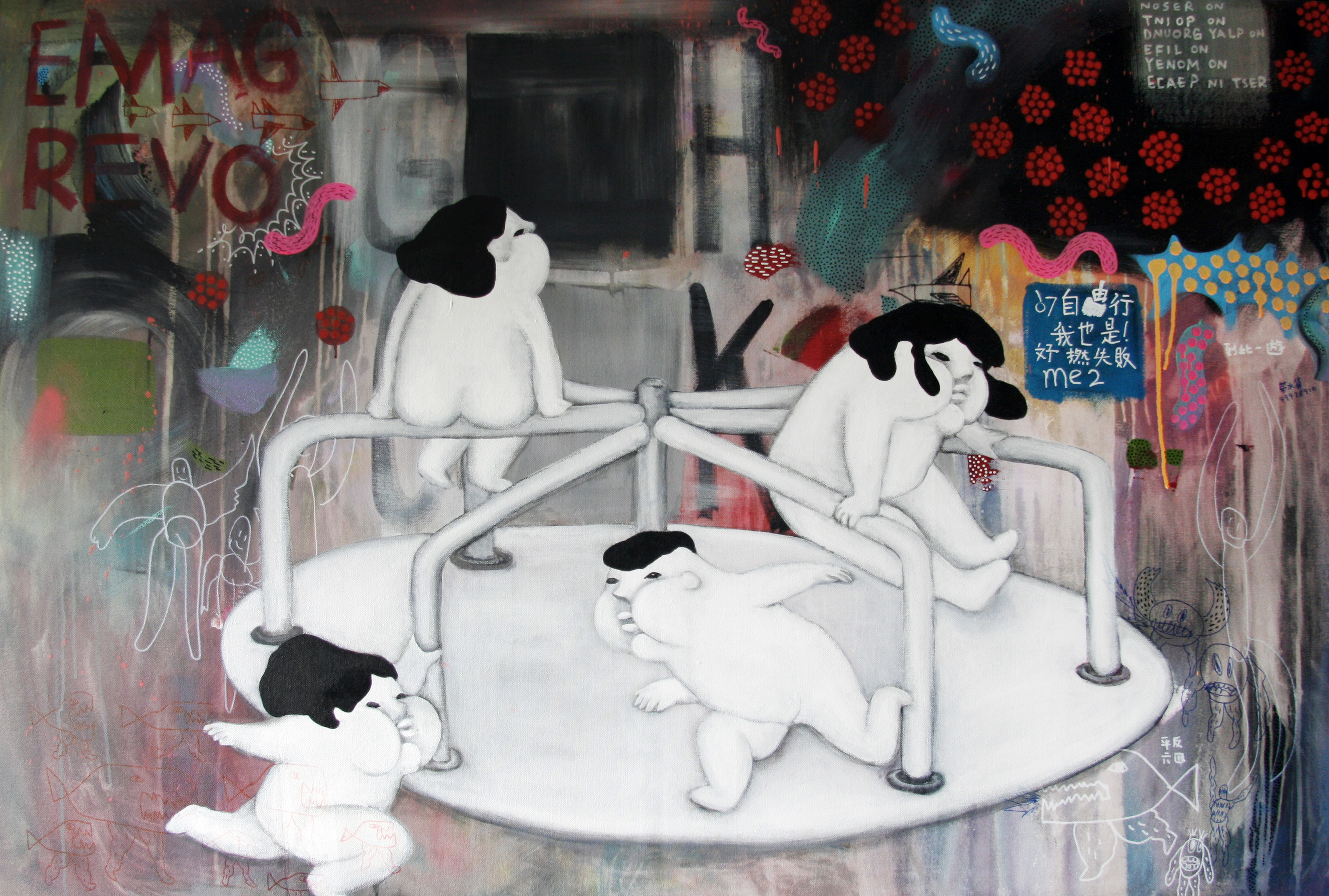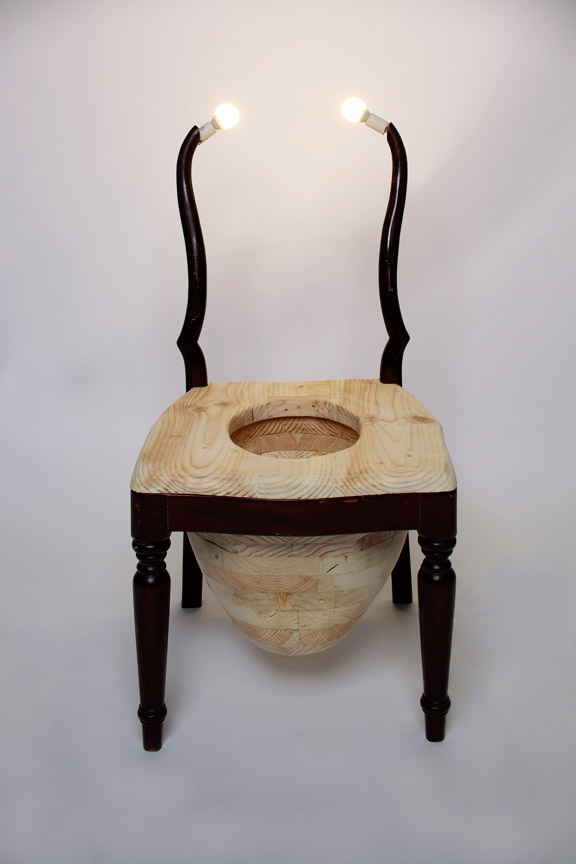Shows
“Hong Kong Invisible” at Schoeni Art Gallery


Currently on display until June 30, “Invisible,” an exhibition of 15 Hong Kong artists, in their 20s or 30s, may seem curiously out of place at a gallery that specializes in mainland contemporary art. This kind of group show, dedicated entirely to local artists, is a first for Schoeni Art Gallery. However, industrious gallery director Nicole Schoeni explained to ArtAsiaPacific that she is merely building on the philosophy of her late father, Manfred Schoeni, who founded the gallery in 1992. Manfred Schoeni played a key role in familiarizing international collectors in the 1990s with the likes of Yue Minjun, Zhang Xiaogang and other artists working largely unknown at the time in the Yuan Ming Yuan artist’s village on the outskirts of Beijing. Now Nicole is developing a platform for a different group of underappreciated artists, working here in China’s backyard.
“Invisible” is spread across three separate, nearby locations: Schoeni’s main gallery on Old Bailey Street, the Hollywood Road branch and the gallery’s newest exhibition space, at 8 Chancery Lane—formerly used as the gallery’s storage space. Installed in the window of the Chancery Lane space is the collaborative three-piece installation We Need “The Man” Back (2011) by Mok Wai Hong and Li Chi Tak. The black-and-white, comic book-style narrative shows an acrylic board cutout of a horned antihero responding to the distress calls of three women, illustrated on acrylic board mounted on canvas, who are in danger from a larger-than-life mixed-media cockroach. In the accompanying catalog, Li Chi Tak compares the cockroach to a metamorphosing “monster” thriving in the city’s smog. The work could be interpreted as a narrative of Hong Kong’s monstrous urban development and the consequent need of a dissident hero who can reform the city. Also at Chancery Lane is one from a set of two altered chairs by Jaffa Lam, the only overtly political work in the exhibition. In Lam’s “My Chairlady” (2012) one seat is augmented with a wooden anthill-like mound that makes it impossible to sit on, while the other is fitted with a bowl hanging underneath. According to the artist, these distorted shapes are her joking reference to the distortion of truth in Hong Kong’s recent chief executive elections in March.


The main gallery showcases paintings by the designer and street artist duo Graphic Airlines, populated with their signature ghostly, bloated-faced figures, alongside Mok Yat San’s and Kevin Fun’s fanciful sculptures and Lam Tung Pang’s mixed-media landscapes, in which plastic models of floating islands hover above the Hong Kong cityscape. Touching on themes of urbanity, cultural memory, and the loss of childhood, like the majority of works in the show, these deal in the insecurities of young citydwellers.

Displayed at different gallery branches, Man Fung Yi’s brass replicas of personal garments and William Tsang’s rather straightforward installation, in which anonymous photographers in a mixed-media relief are spying on a nude woman, depicted in charcoal on paper on an opposite wall, contemplate voyeurism and the boundary between self and other. Kum Chi Keung’s fruit-shaped wooden birdcages represent the increasing distance between food production and consumption that makes values associated with apples, for example, such as “wisdom” or the “reddish gene,” harder to fathom. Along with Eunice Cheung’s ink and color painting of a chain-smoking sparrow, such pieces capture the widening disjuncture between man and nature in an urban center, such as Hong Kong.
The generally pessimistic and anxious expressions found in “Invisible” create the impression of a cold and unaccommodating city. Besides their emergent status, the represented artists are united by the challenges they face navigating the Hong Kong art scene: lack of space, high cost of living and few galleries that actively seek out new, or local, talent. Over the last four years, Schoeni Art Gallery has increasingly supported younger, more experimental artists. In this sense, “Invisible” expands on two previous projects, “Adapta” and “Niubi,” both launched by the gallery in 2008. The latest installment of Schoeni Art Gallery’s Niubi series was “Generation Me: Lost in Transition,” an exhibition from February this year of young Mainland Chinese artists who are struggling to find their place in an already established and highly competitive art market. Their other project, Adapta, has promoted street artists from the UK, USA and Hong Kong. "Hong Kong Invisible" thus bolsters this new direction for the gallery, on the eve of its 20th anniversary this November—from pioneer specialist of Mainland avant-garde art to also being a springboard for a younger generation of Mainland, Hong Kong and international artists.







